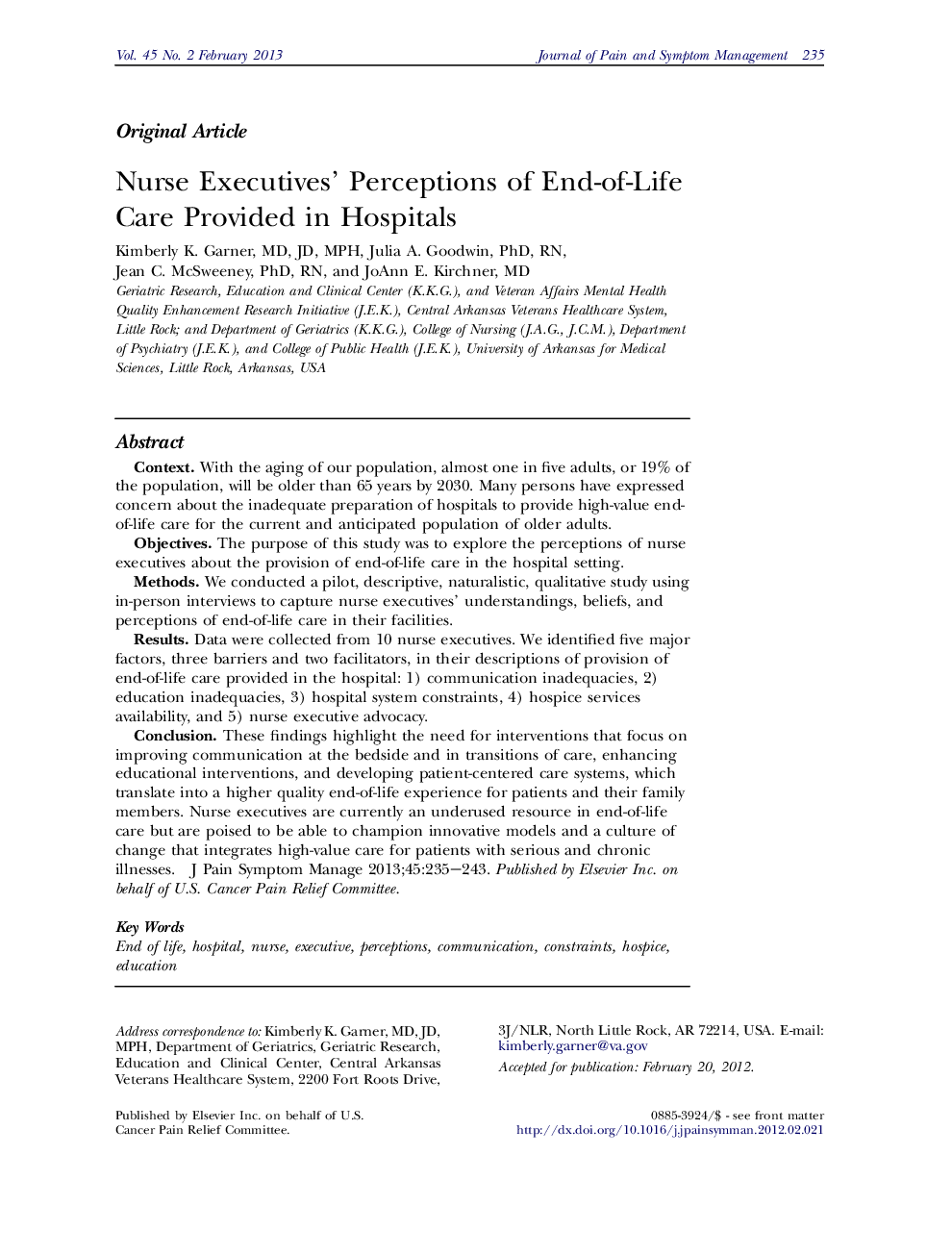| کد مقاله | کد نشریه | سال انتشار | مقاله انگلیسی | نسخه تمام متن |
|---|---|---|---|---|
| 2736064 | 1147816 | 2013 | 9 صفحه PDF | دانلود رایگان |

ContextWith the aging of our population, almost one in five adults, or 19% of the population, will be older than 65 years by 2030. Many persons have expressed concern about the inadequate preparation of hospitals to provide high-value end-of-life care for the current and anticipated population of older adults.ObjectivesThe purpose of this study was to explore the perceptions of nurse executives about the provision of end-of-life care in the hospital setting.MethodsWe conducted a pilot, descriptive, naturalistic, qualitative study using in-person interviews to capture nurse executives' understandings, beliefs, and perceptions of end-of-life care in their facilities.ResultsData were collected from 10 nurse executives. We identified five major factors, three barriers and two facilitators, in their descriptions of provision of end-of-life care provided in the hospital: 1) communication inadequacies, 2) education inadequacies, 3) hospital system constraints, 4) hospice services availability, and 5) nurse executive advocacy.ConclusionThese findings highlight the need for interventions that focus on improving communication at the bedside and in transitions of care, enhancing educational interventions, and developing patient-centered care systems, which translate into a higher quality end-of-life experience for patients and their family members. Nurse executives are currently an underused resource in end-of-life care but are poised to be able to champion innovative models and a culture of change that integrates high-value care for patients with serious and chronic illnesses.
Journal: Journal of Pain and Symptom Management - Volume 45, Issue 2, February 2013, Pages 235–243